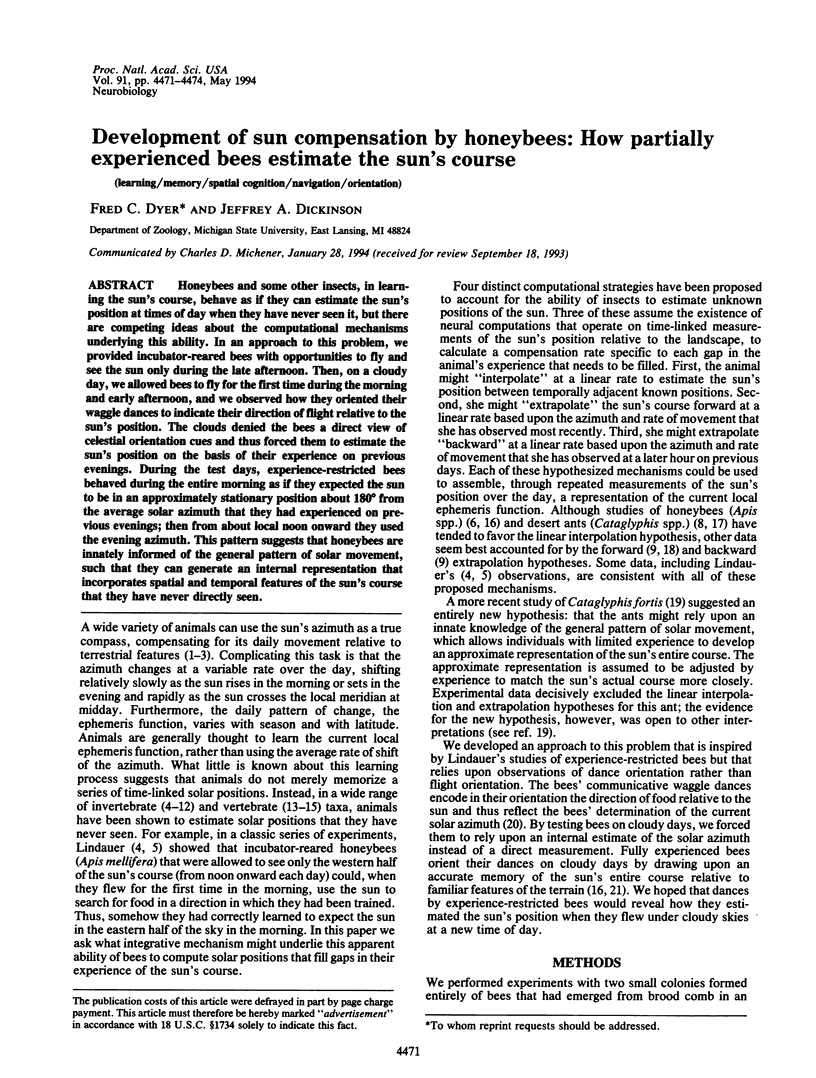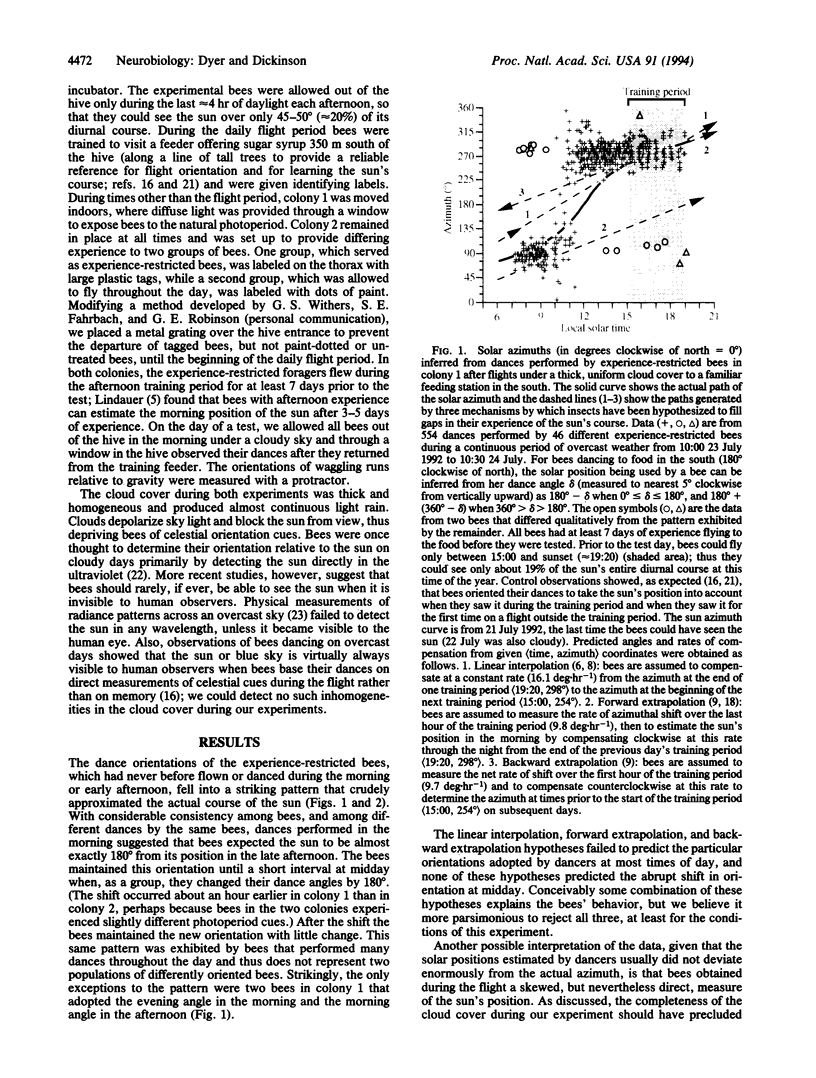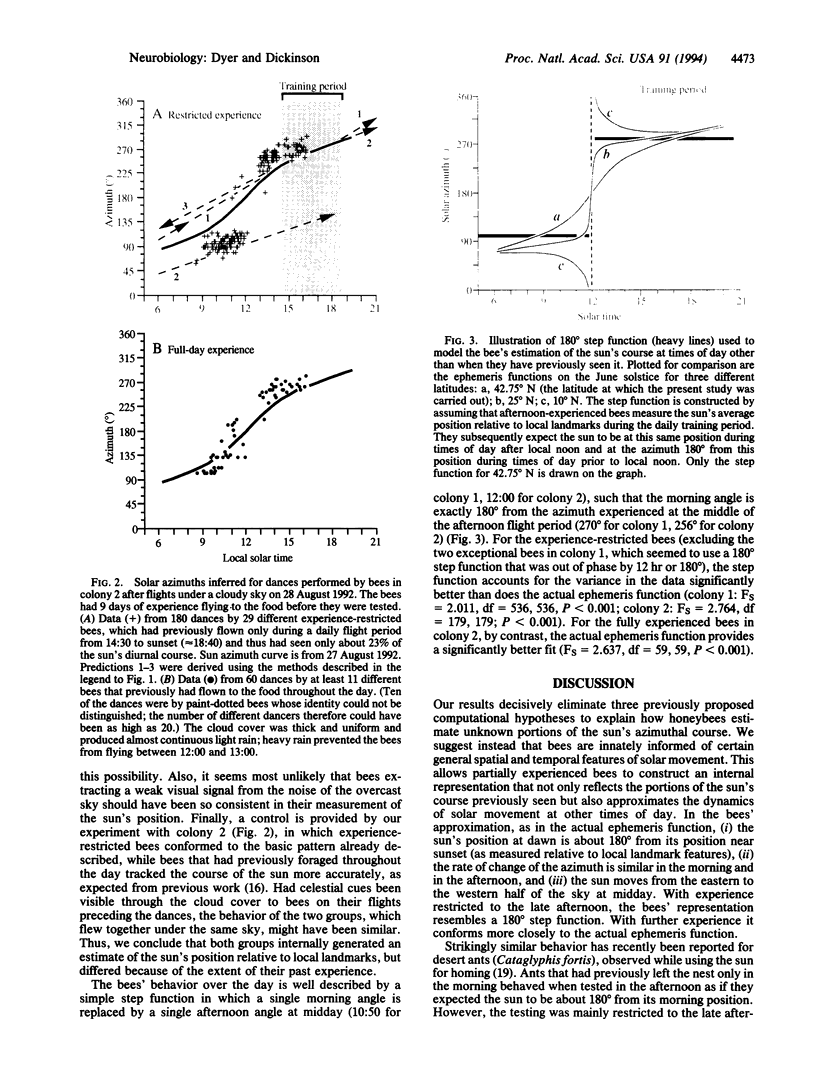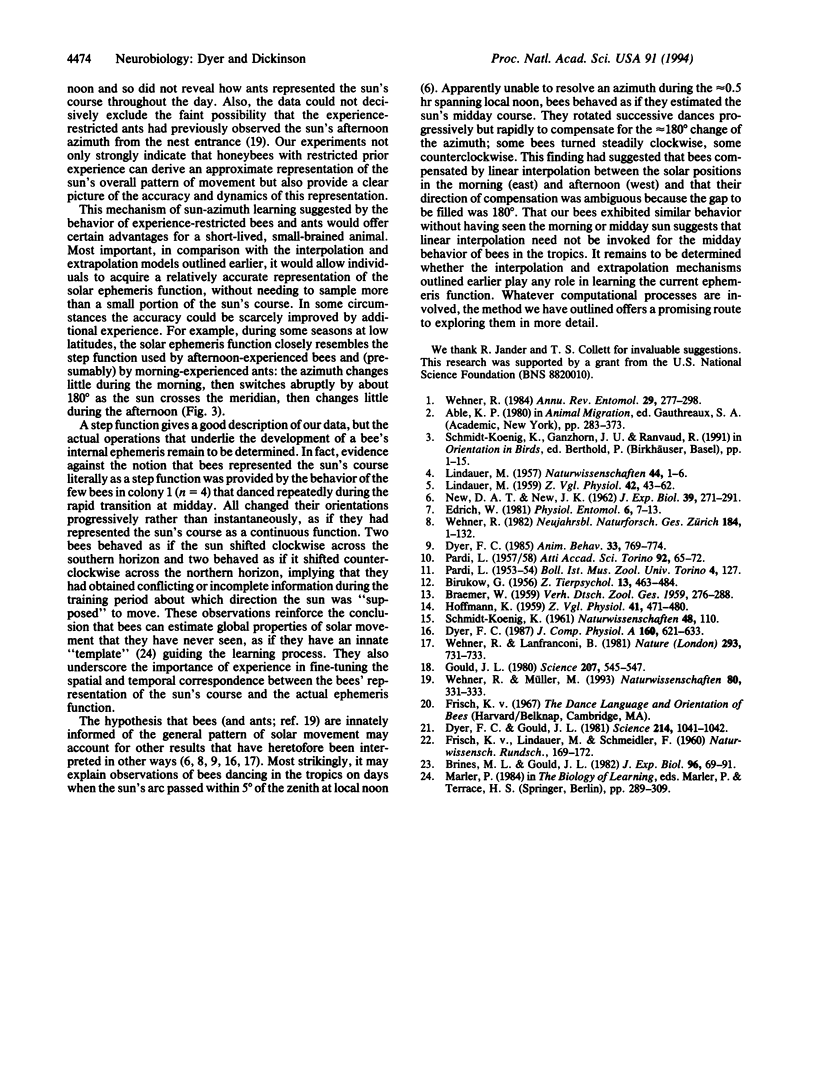Abstract
Honeybees and some other insects, in learning the sun's course, behave as if they can estimate the sun's position at times of day when they have never seen it, but there are competing ideas about the computational mechanisms underlying this ability. In an approach to this problem, we provided incubator-reared bees with opportunities to fly and see the sun only during the late afternoon. Then, on a cloudy day, we allowed bees to fly for the first time during the morning and early afternoon, and we observed how they oriented their waggle dances to indicate their direction of flight relative to the sun's position. The clouds denied the bees a direct view of celestial orientation cues and thus forced them to estimate the sun's position on the basis of their experience on previous evenings. During the test days, experience-restricted bees behaved during the entire morning as if they expected the sun to be in an approximately stationary position about 180 degrees from the average solar azimuth that they had experienced on previous evenings; then from about local noon onward they used the evening azimuth. This pattern suggests that honeybees are innately informed of the general pattern of solar movement, such that they can generate an internal representation that incorporates spatial and temporal features of the sun's course that they have never directly seen.
Full text
PDF



Images in this article
Selected References
These references are in PubMed. This may not be the complete list of references from this article.
- Dyer F. C., Gould J. L. Honey bee orientation: a backup system for cloudy days. Science. 1981 Nov 27;214(4524):1041–1042. doi: 10.1126/science.214.4524.1041. [DOI] [PubMed] [Google Scholar]
- Gould J. L. Sun compensation by bees. Science. 1980 Feb 1;207(4430):545–547. doi: 10.1126/science.207.4430.545. [DOI] [PubMed] [Google Scholar]
- Schmidt-Koenig K., Ganzhorn J. U., Ranvaud R. Orientation in birds. The sun compass. EXS. 1991;60:1–15. [PubMed] [Google Scholar]





